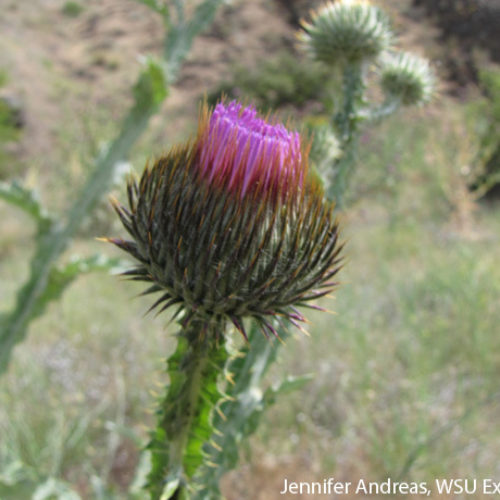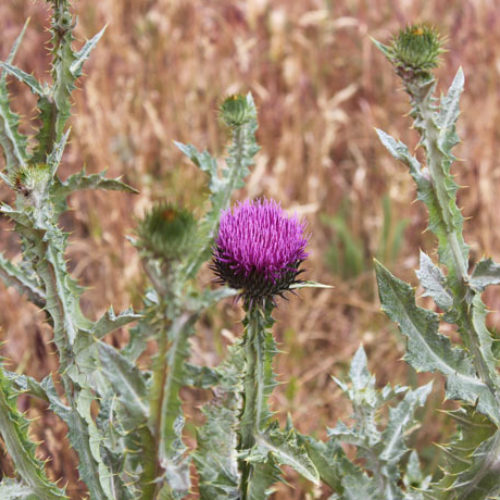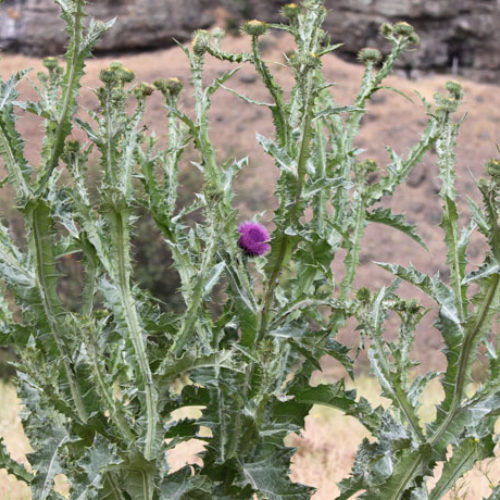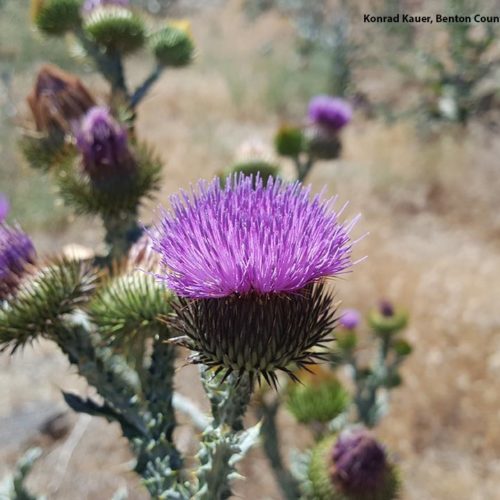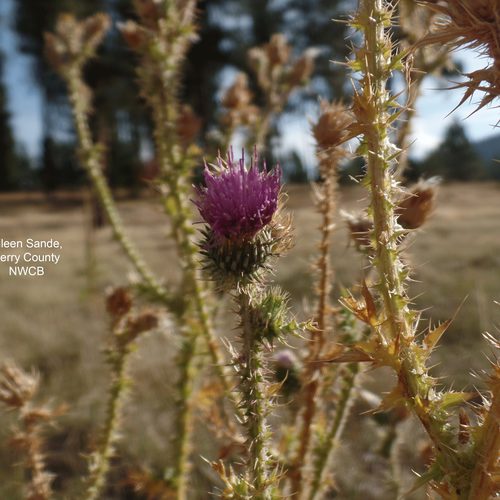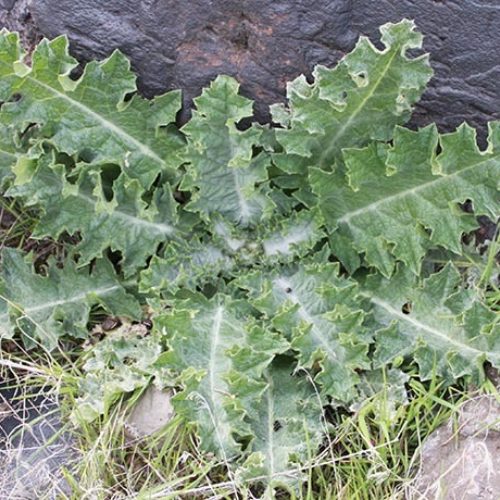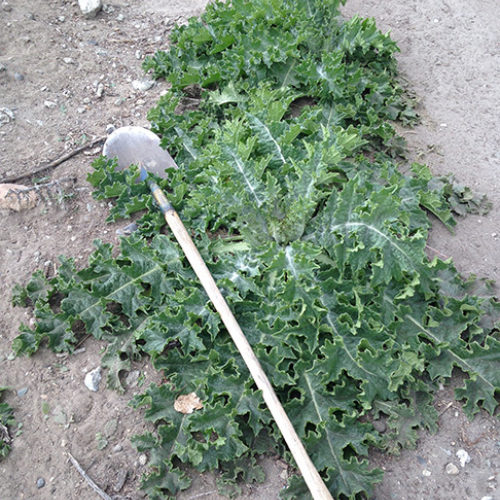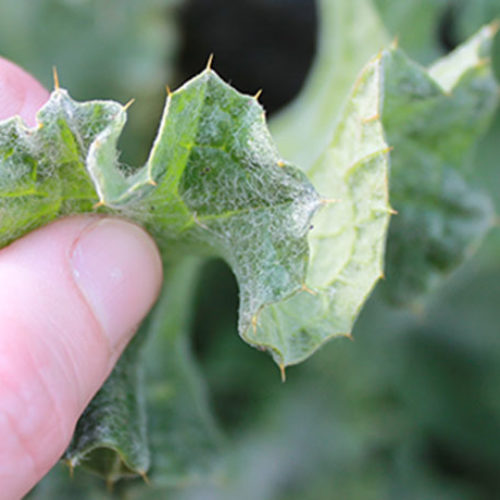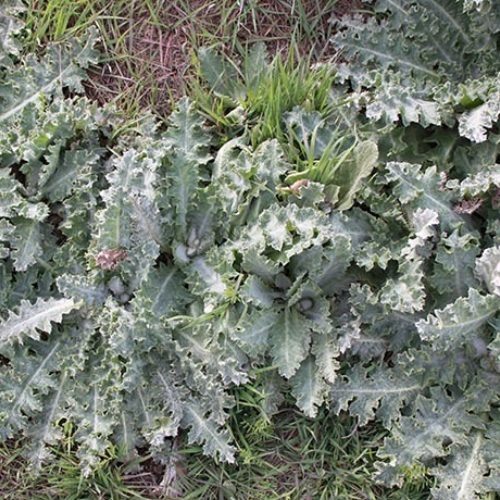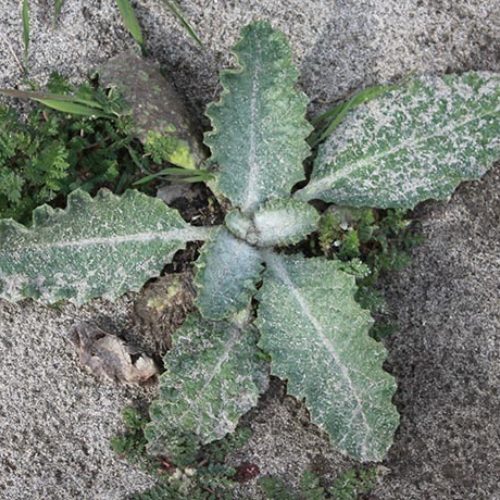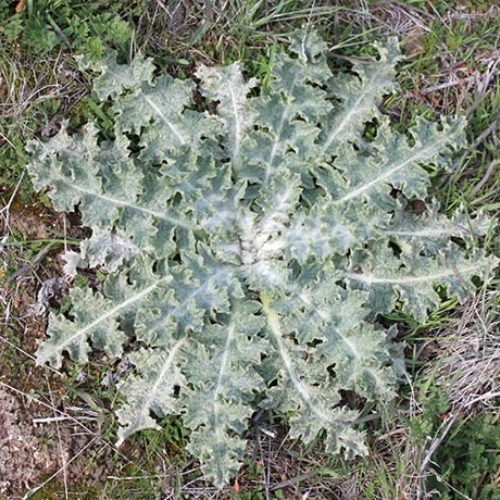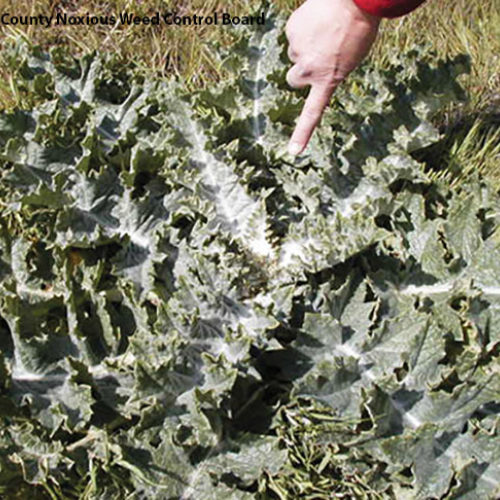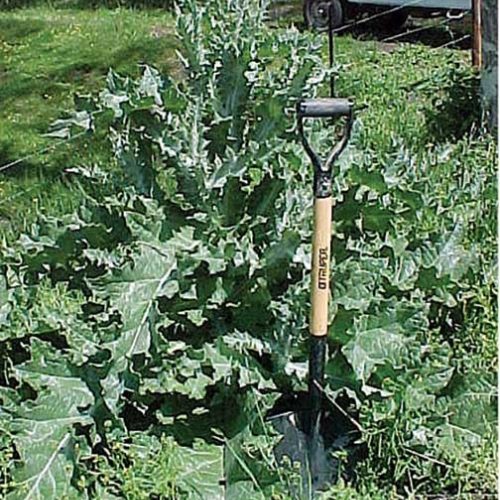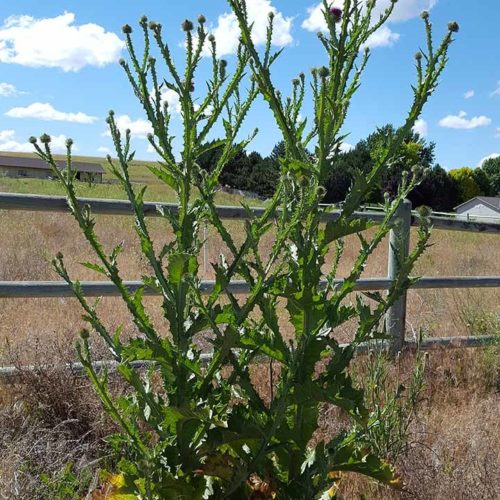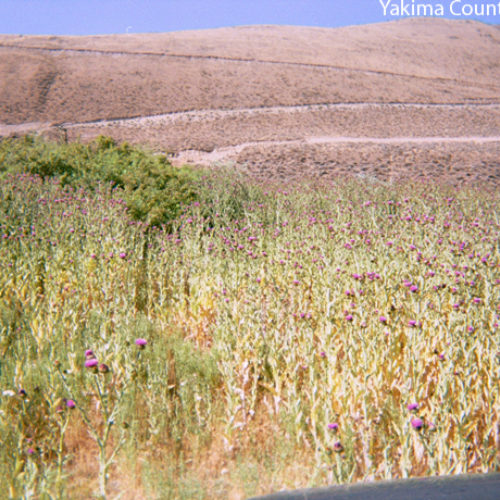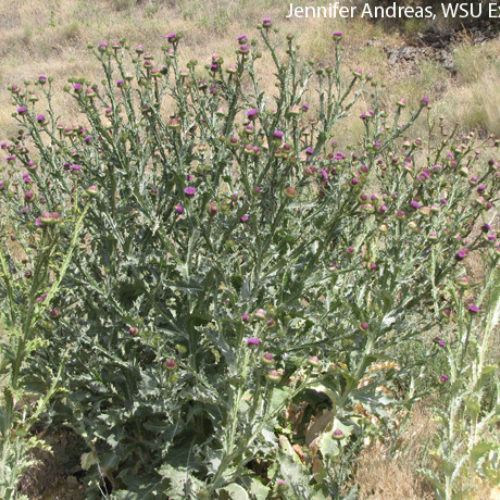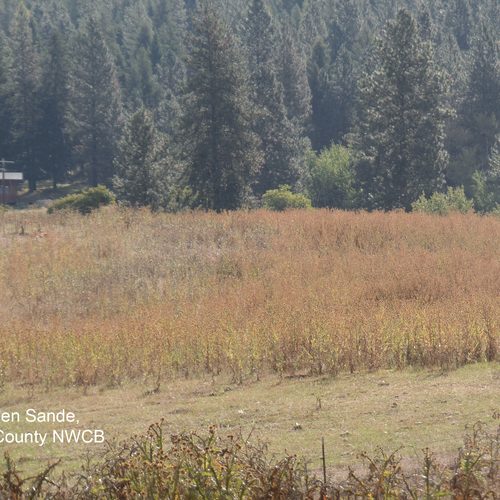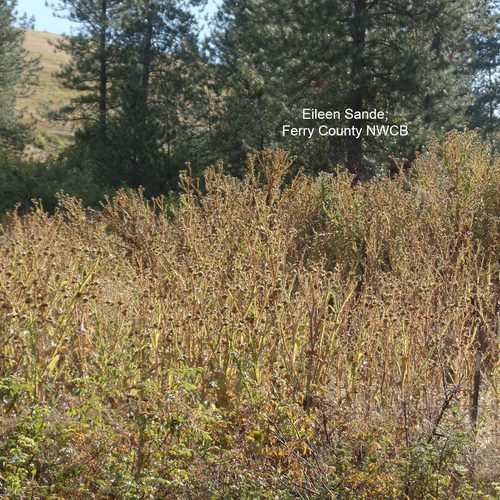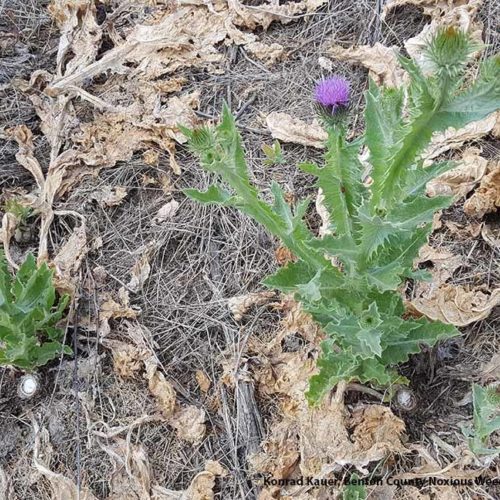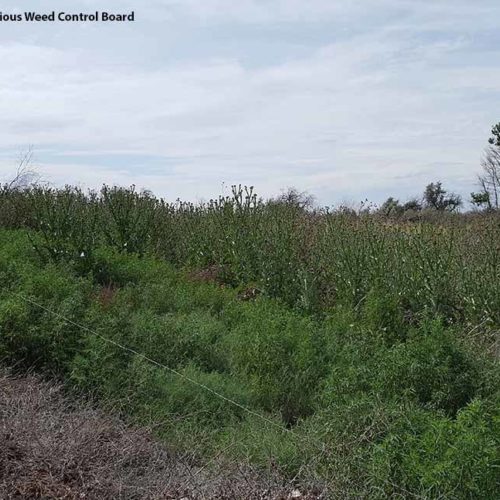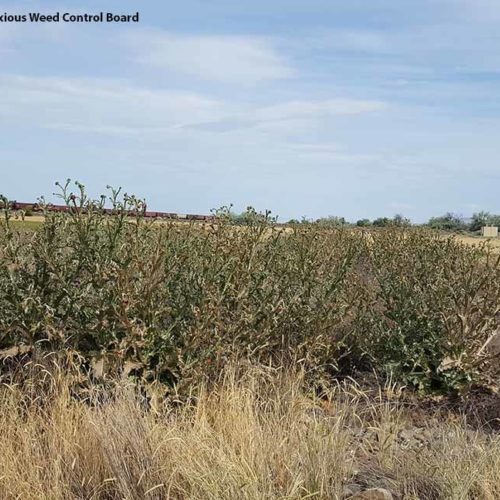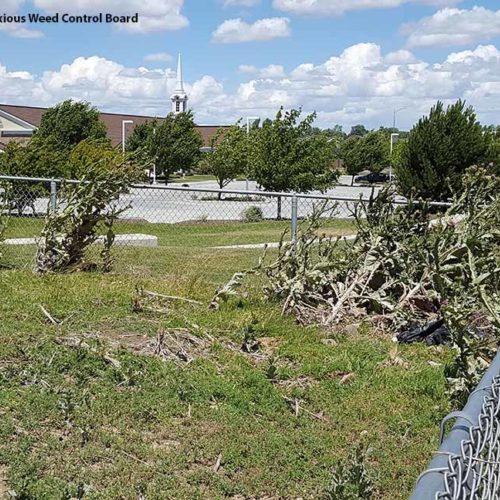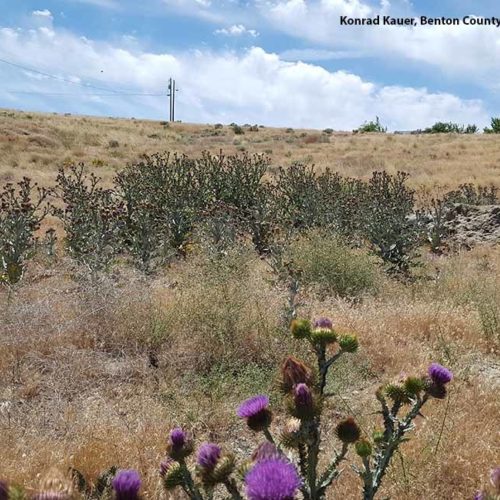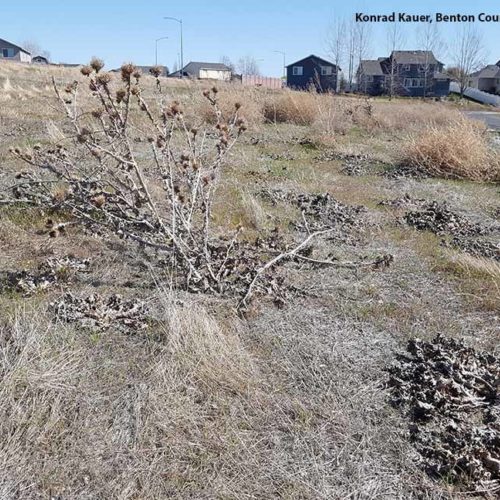Scotch Thistle
Onopordum acanthium
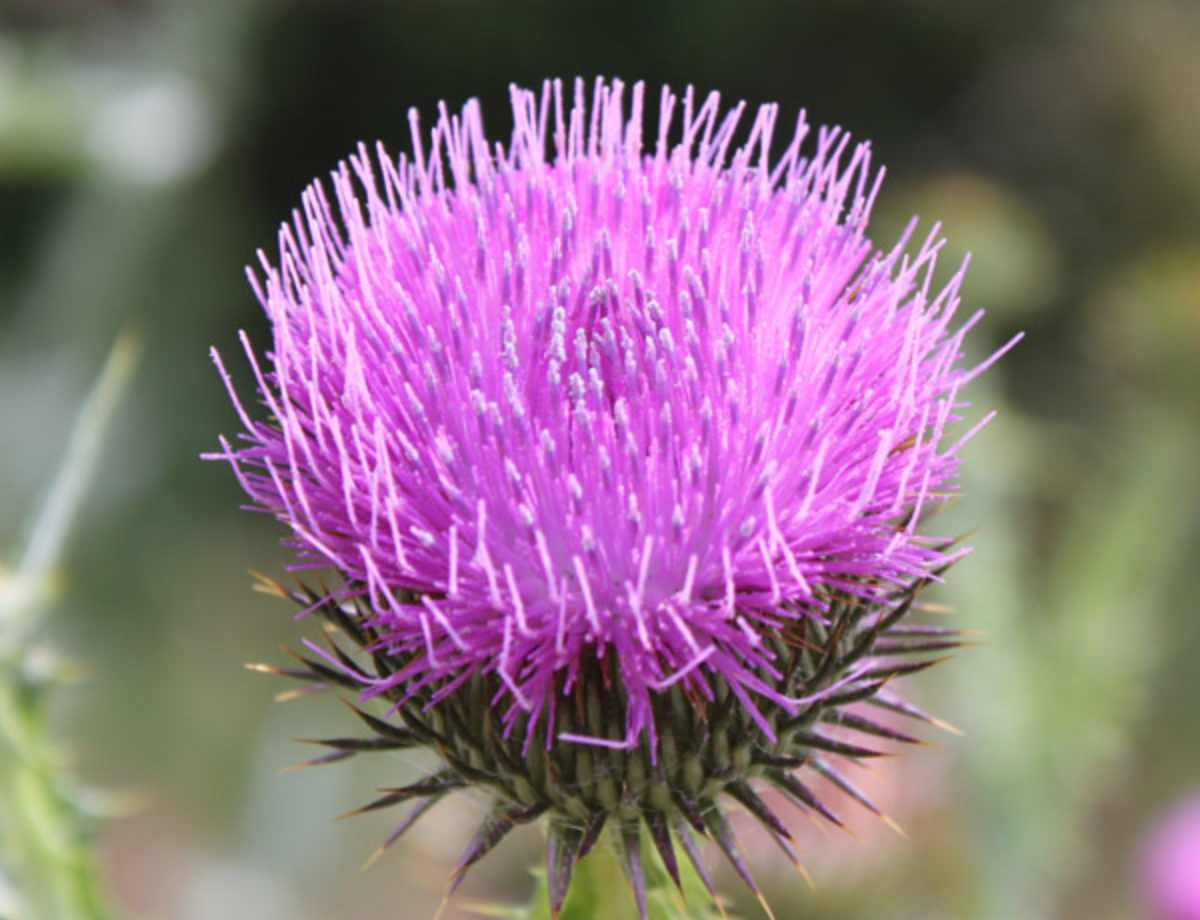
Family: Asteraceae
Other Common Names: cotton thistle, woolly thistle
Weed class: B
Year Listed: 1988
Native to: Europe and Asia
Is this Weed Toxic?:
not known to be
Legal listings:
This plant is also on the Washington State quarantine list. It is prohibited to transport, buy, sell, offer for sale, or distribute plants or plant parts of quarantined species into or within the state of Washington or to sell, offer for sale, or distribute seed packets of seed, flower seed blends, or wildflower mixes of quarantined species into or within the state of Washington. Please see WAC 16-752 for more information on the quarantine list. For questions about the quarantine list, contact the Washington State Department of Agriculture's Plant Services Program at (360) 902-1874 or email PlantServices@agr.wa.gov.
Why Is It a Noxious Weed?
Scotch thistle is a problem in rangelands and other open areas. Infestations of Scotch thistle reduce forage production and virtually prohibit land utilization for livestock and block access for people and wildlife. Dense stands of the large, spiny plants exclude animals from grazing and access to water.
How would I identify it?
General Description
Scotch thistle is a branched, biennial or annual with a broadly winged stem that can grow up to 8 feet or more in height and 6 feet in width.
Flower Description
Plants flower in mid-summer. The globe-shaped flowerheads solitary or in groups of 2-7 on branch tips. Flowerheads are up to 1 to 3 inches in diameter, rounded, with long, stiff, needle-like bracts at the base. Flowerheads contain many disk flowers that range from dark pink to lavender in color, though occasionally white.
Leaf description
Leaves are up to 2 feet long and 1 foot wide, are covered with sharp yellow spines and have a gray-green appearance from being covered with a thick mat of cotton-like or woolly hairs.
Stem description
Stems have vertical rows of prominent, spiny, ribbon-like leaf material or wings that extend to the base of the flower heads.
Fruit Seed Description
Seeds are smooth, slender, and plumed.
Where does it grow?
Scotch thistle will grow in wet meadows and pastures as well as dry pastures and rangelands. It may also be found alongside streams and rivers. Please click here to see a county level distribution map of Scotch thistle in Washington.
How Does it Reproduce?
Scotch thistle reproduces by seed. Each plant can produce 8,400 to 40,000 seeds.
How Do I Control It?
General Control Strategy
Establishing a dense well-maintained pasture is effective in preventing and competing with a Scotch thistle infestation.
Manual/Mechanical Control
Small infestations can be dug out. Dig out rosettes by severing plant's taproot with a shovel below the soil's surface. Mowing has limited effectiveness for controlling Scotch thistle, usually only prevents seed production. Mow too early and plants can recover and flower. Flowerheads that are cut when already in bloom may still release seed if left on the ground - so bag up and trash cut flowerheads. Repeated mowing may prevent flowering. Make sure to mow before flowering to prevent seeds development. Repeated mowing may be needed on moist sites.
Biological/cultural Control
Goats will graze Scotch thistle plants, eating flowerheads, and sheep may feed on small rosettes. There are no insects currently approved for the biological control of Scotch thistle.
Herbicide Control
There are a number of herbicide options for Scotch thistle. Please refer to the PNW Weed Management Handbook, or contact your county noxious weed coordinator.
For More Information
Scotch thistle weed report from the book Weed Control in Natural Areas in the Western United States
See our Written Findings for more information about Scotch thistle (Onopordum acanthium).
Thurston County NWCB Fact Sheet on Scotch thistle
Franklin County NWCB Fact Sheet on Scotch thistle
Stevens County NWCB Fact Sheet on Scotch thistle
Whatcom County NWCB Fact Sheet on Scotch thistle
Pierce County NWCB Fact Sheet on Scotch thistle
Lincoln County NWCB Brochure on Scotch thistle



